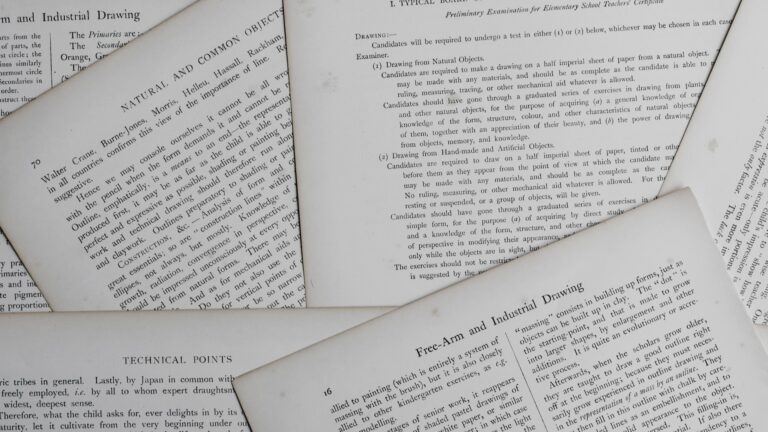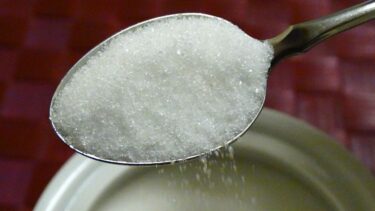こちらのページは、
サイエンス > 人工甘味料アスパルテームはどこが危険なのか
の参考文献をまとめたページです。もとの記事はこちらからご覧いただけます。
ダイエット飲料などに使われている甘味料アスパルテームについて、ネット上にさまざまな情報がのっています。中でもその危険性を指摘するものは多く、脳腫瘍、白血病、知能低下、糖尿病、心疾患、アトピーなど、衝撃的な文字が並んでいます。しかし残念ながら[…]
参考文献
1) Yang Q. Gain weight by “going diet?” Artificial sweeteners and the neurobiology of sugar cravings: Neuroscience 2010. Yale J Biol Med. 2010;83(2):101-108.
2) Swithers SE. Artificial sweeteners produce the counterintuitive effect of inducing metabolic derangements. Trends Endocrinol Metab. 2013;24(9):431-441. doi:10.1016/j.tem.2013.05.005
3) Palmnäs MS, Cowan TE, Bomhof MR, et al. Low-dose aspartame consumption differentially affects gut microbiota-host metabolic interactions in the diet-induced obese rat. PLoS One. 2014;9(10):e109841. Published 2014 Oct 14. doi:10.1371/journal.pone.0109841
4) Kuk JL, Brown RE. Aspartame intake is associated with greater glucose intolerance in individuals with obesity. Appl Physiol Nutr Metab. 2016;41(7):795-798. doi:10.1139/apnm-2015-0675
5) Azad MB, Abou-Setta AM, Chauhan BF, et al. Nonnutritive sweeteners and cardiometabolic health: a systematic review and meta-analysis of randomized controlled trials and prospective cohort studies. CMAJ. 2017;189(28):E929-E939. doi:10.1503/cmaj.161390
6) Lohner S, Toews I, Meerpohl JJ. Health outcomes of non-nutritive sweeteners: analysis of the research landscape. Nutr J. 2017;16(1):55. Published 2017 Sep 8. doi:10.1186/s12937-017-0278-x
7) Mooradian AD, Smith M, Tokuda M. The role of artificial and natural sweeteners in reducing the consumption of table sugar: A narrative review. Clin Nutr ESPEN. 2017;18:1-8. doi:10.1016/j.clnesp.2017.01.004
8)Ardalan MR, Tabibi H, Ebrahimzadeh Attari V, Malek Mahdavi A. Nephrotoxic Effect of Aspartame as an Artificial Sweetener: a Brief Review. Iran J Kidney Dis. 2017;11(5):339-343.
9)Walbolt J, Koh Y. Non-nutritive Sweeteners and Their Associations with Obesity and Type 2 Diabetes. J Obes Metab Syndr. 2020;29(2):114-123. doi:10.7570/jomes19079
10) Czarnecka K, Pilarz A, Rogut A, et al. Aspartame-True or False? Narrative Review of Safety Analysis of General Use in Products. Nutrients. 2021;13(6):1957. Published 2021 Jun 7. doi:10.3390/nu13061957
11) 日本食品化学研究振興財団、平成 14 年度マーケットバスケット方式による食品添加物一日摂取量調査
12) Olney JW, Farber NB, Spitznagel E, Robins LN. Increasing brain tumor rates: is there a link to aspartame?. J Neuropathol Exp Neurol. 1996;55(11):1115-1123. doi:10.1097/00005072-199611000-00002
13) Lim U, Subar AF, Mouw T, et al. Consumption of aspartame-containing beverages and incidence of hematopoietic and brain malignancies. Cancer Epidemiol Biomarkers Prev. 2006;15(9):1654-1659. doi:10.1158/1055-9965.EPI-06-0203
14) Magnuson BA, Burdock GA, Doull J, et al. Aspartame: a safety evaluation based on current use levels, regulations, and toxicological and epidemiological studies. Crit Rev Toxicol. 2007;37(8):629-727. doi:10.1080/10408440701516184
15) Cabaniols C, Giorgi R, Chinot O, et al. Links between private habits, psychological stress and brain cancer: a case-control pilot study in France. J Neurooncol. 2011;103(2):307-316. doi:10.1007/s11060-010-0388-1
16) Marinovich M, Galli CL, Bosetti C, Gallus S, La Vecchia C. Aspartame, low-calorie sweeteners and disease: regulatory safety and epidemiological issues. Food Chem Toxicol. 2013;60:109-115. doi:10.1016/j.fct.2013.07.040
17) Shibui Y, Fujitani S, Iwata H, Lynch B, Roberts A. Histological analyses of the Ishii (1981) rat carcinogenicity study of aspartame and comparison with the Ramazzini Institute studies. Regul Toxicol Pharmacol. 2019;102:23-29. doi:10.1016/j.yrtph.2018.12.010
18) Haighton L, Roberts A, Walters B, Lynch B. Systematic review and evaluation of aspartame carcinogenicity bioassays using quality criteria. Regul Toxicol Pharmacol. 2019;103:332-344. doi:10.1016/j.yrtph.2018.01.009
19) Soffritti M, Belpoggi F, Degli Esposti D, Lambertini L, Tibaldi E, Rigano A. First experimental demonstration of the multipotential carcinogenic effects of aspartame administered in the feed to Sprague-Dawley rats. Environ Health Perspect. 2006;114(3):379-385. doi:10.1289/ehp.8711
20) Belpoggi F, Soffritti M, Padovani M, Degli Esposti D, Lauriola M, Minardi F. Results of long-term carcinogenicity bioassay on Sprague-Dawley rats exposed to aspartame administered in feed. Ann N Y Acad Sci. 2006;1076:559-577. doi:10.1196/annals.1371.080
21) Soffritti M, Belpoggi F, Tibaldi E, Esposti DD, Lauriola M. Life-span exposure to low doses of aspartame beginning during prenatal life increases cancer effects in rats. Environ Health Perspect. 2007;115(9):1293-1297. doi:10.1289/ehp.10271
22) Caldwell JC, Jinot J, DeVoney D, Gift JS. Evaluation of evidence for infection as a mode of action for induction of rat lymphoma. Environ Mol Mutagen. 2008;49(2):155-164. doi:10.1002/em.20356
23) Schernhammer ES, Bertrand KA, Birmann BM, Sampson L, Willett WC, Feskanich D. Consumption of artificial sweetener- and sugar-containing soda and risk of lymphoma and leukemia in men and women [published correction appears in Am J Clin Nutr. 2013 Aug;98(2):512]. Am J Clin Nutr. 2012;96(6):1419-1428. doi:10.3945/ajcn.111.030833
24) Tibaldi E, Gnudi F, Panzacchi S, et al. Identification of aspartame-induced haematopoietic and lymphoid tumours in rats after lifetime treatment. Acta Histochem. 2020;122(5):151548. doi:10.1016/j.acthis.2020.151548
25) Magnuson BA, Burdock GA, Doull J, et al. Aspartame: a safety evaluation based on current use levels, regulations, and toxicological and epidemiological studies. Crit Rev Toxicol. 2007;37(8):629-727. doi:10.1080/10408440701516184
26) Nettleton JE, Reimer RA, Shearer J. Reshaping the gut microbiota: Impact of low calorie sweeteners and the link to insulin resistance?. Physiol Behav. 2016;164(Pt B):488-493. doi:10.1016/j.physbeh.2016.04.029
27) Ruiz-Ojeda FJ, Plaza-Díaz J, Sáez-Lara MJ, Gil A. Effects of Sweeteners on the Gut Microbiota: A Review of Experimental Studies and Clinical Trials [published correction appears in Adv Nutr. 2020 Mar 1;11(2):468]. Adv Nutr. 2019;10(suppl_1):S31-S48. doi:10.1093/advances/nmy037
28) Nettleton JE, Cho NA, Klancic T, et al. Maternal low-dose aspartame and stevia consumption with an obesogenic diet alters metabolism, gut microbiota and mesolimbic reward system in rat dams and their offspring. Gut. 2020;69(10):1807-1817. doi:10.1136/gutjnl-2018-317505
29) von Poser Toigo E, Huffell AP, Mota CS, Bertolini D, Pettenuzzo LF, Dalmaz C. Metabolic and feeding behavior alterations provoked by prenatal exposure to aspartame. Appetite. 2015;87:168-174. doi:10.1016/j.appet.2014.12.213
30) Englund-Ögge L, Brantsæter AL, Haugen M, et al. Association between intake of artificially sweetened and sugar-sweetened beverages and preterm delivery: a large prospective cohort study. Am J Clin Nutr. 2012;96(3):552-559. doi:10.3945/ajcn.111.031567
31) Kim GD, Park YS, Ahn HJ, Cho JJ, Park CS. Aspartame Attenuates 2, 4-Dinitrofluorobenzene-Induced Atopic Dermatitis-Like Clinical Symptoms in NC/Nga Mice. J Invest Dermatol. 2015;135(11):2705-2713. doi:10.1038/jid.2015.234
32) Hill AM, Belsito DV. Systemic contact dermatitis of the eyelids caused by formaldehyde derived from aspartame?. Contact Dermatitis. 2003;49(5):258-259. doi:10.1111/j.0105-1873.2003.0225a.x
33) Aquino M, Rosner G. Systemic Contact Dermatitis. Clin Rev Allergy Immunol. 2019;56(1):9-18. doi:10.1007/s12016-018-8686-z

